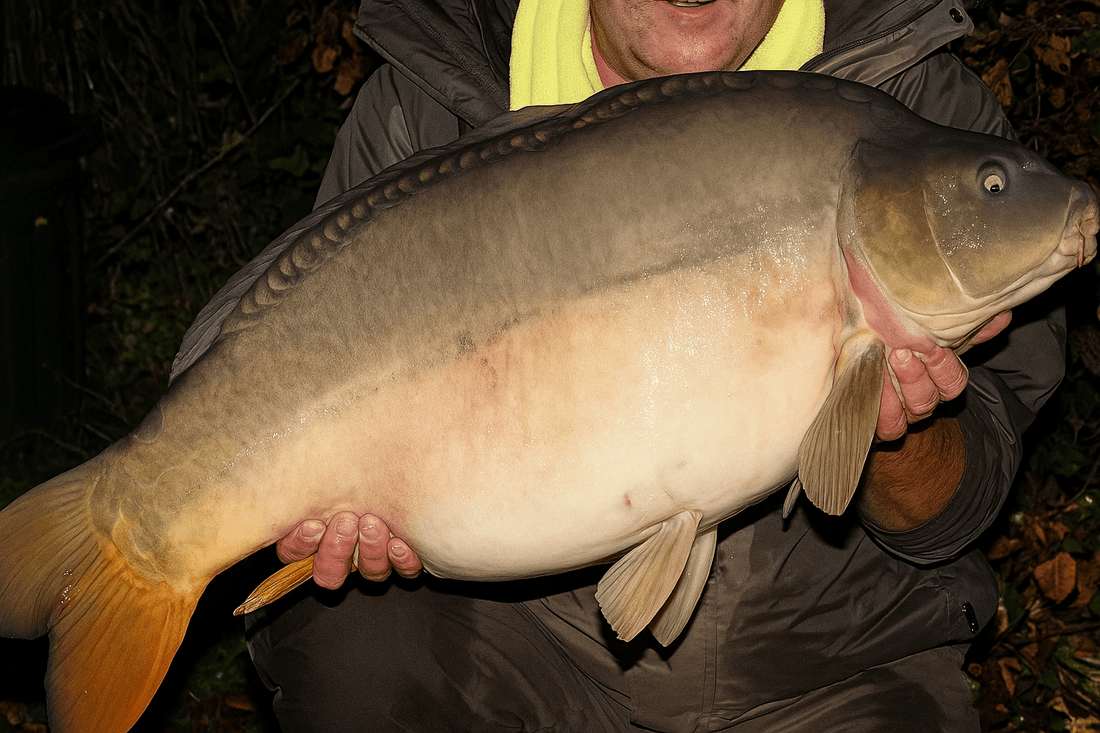
Using Particles for Carp Fishing: Tips and Techniques
Share
I first got interested in using what we generally call particle baits back in the early 70s when Rod Hutchinson first wrote his definitive series of articles in Angling magazine, and later in his first book.
It was Rod too that unveiled the secrets to be found behind the doors of the old J.E.Haiths warehouse at Cleethorpes. And it was Rod again who explained the intricacies of what he called preoccupied feeding.
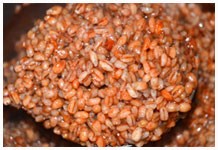
To attain an appreciation of what preoccupied feeding entails you need to actually see the carp feeding and once seen never forgotten! If carp have manners, then the only ones I have experienced are bad ones! When carp get their heads down of a big bed of seeds and particles they feed really aggressively and when they are feeding in such a manner, they become that much easier to catch. Small seeds and larger pulses are the ideal way to turn them on so that they become preoccupied. Cereals are another avenue of approach and oat groats, mini maize and as see below, pearl barley all make fantastic baits.
Where there is an abundance of natural food a particle approach will help wean the carp off the naturals and it will generally do so more quickly than a boilies-only approach. OK, the carp may not move in instantly but once the carp become aware of the abundance of tiny bait items they soon get their heads down.
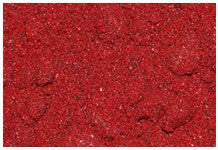
This is Robin Red, undoubtedly the best carp attractor of all time. Most anglers restrict themselves by only using it as part of their boiled bait recipes, however, it is every bit as valid an ingredients for use with particle baits. It goes into just about every feed/ground bait that I create, and I also use it as a dressing for popcorn maize, hempseed and other mass baits. Robin Red also forms a significant part of the ground bait I created for Haiths in 2000 – it is still going strong. SuperRed is one of the most complete and versatile ground baits ever devised and I always add it to every mix of particles I use.
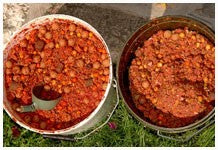
Here you see two buckets of my favourite SuperRed groundbait ready to be introduced to the swim You will note that boiled baits, tiger nuts and large pellets are also included in the ground bait. This increases the preoccupation factor still further and preoccupied, aggressive feeding is more or less guaranteed once the carp get their heads down.
I designed SuperRed to be much more than just a groundbait. It can be used as Method feed, as a sloppy wet carpet feed, it can be used dry in PVA mesh and it can even be used to make boiled baits. That’s how versatile it is! One of the best ways to use SuperRed is to bind together small boilies that can be fired out using a groundbait sling or a catapult. Once the SuperRed balls have broken down the lakebed will be dotted here and there with small piles of particles and boilies.
Mass baits come in many guises are far more complex than single seed bait carpets, which is why I prefer to use blends such as Red Band Pigeon Conditioner. You could also customise ingredients to create a personalised blend such as a 50/50 mix of Red Band and Hempseed. In fact this blend is so good it is almost cheating!
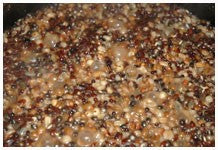
This is what your finished particle blend should look like when the cooking process is over However, you can liven up the bait by adding a liquid attractor such as Corn Steep Liquor. Then by adding a birdfood such as Red Factor you can form stiff 30-40mm sized balls of Red Band and hempseed, as the birdfood contains a sticky binder that simply requires the addition of water to form these highly attractive balls of carpy goodness
Many anglers advocate a very simple method of preparing Red Band, namely what is called the freezer box method. Here Red Band is placed in a freezer box and boiling water is poured over it. The box is then sealed with the lid and left for 24-36 hours. In theory the Red Band is ready to use now. While I accept this method does work to a certain extent, from choice I prefer to not only soak the Red Band in boiling water but also to boil it for about 15 minutes. This helps release the sticky glutinous slime that carp find so attractive. Simmer until almost all the liquid has boiled away leaving behind only the sticky dampness that holds the mix together. .
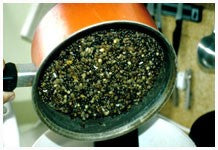
Ideally you should be able to turn the pan upside down without any bait falling out. A comprehensive, multi-part groundbait will work well on just about any venue large or small, and this is a classic sign that carp have been hitting the bait hard.

Here they have totally cleared the lake bed of silt and other debris leaving only the bright clear gravel to show up against the surrounding silt. I call this tell tale sign a dinner table.
This type of feeding is exactly what you should be aiming for if you fish for carp in a river. Bait up several areas with as much bait as you can spare and keep visiting your spots on a routine basis, fishing a hour or so and then moving to the next spot if nothing’s doing. I do a great deal of river fishing these days and mass baiting is invariably my preferred tactic.
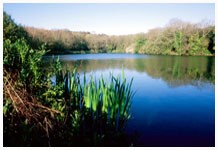
I also use it extensively when small water fishing on tiny lakes, ideally those without a great deal of angling pressure. This is just such a venue close to my home in Cornwall. It is a tactic that is perfectly suited to single-rod stalking and by introducing a regular supply of feed into out of the way areas you will be able to tempt the carp right into the margins. Anywhere you can get cover from the feeding fish will be a good stalking spot. Even a sparse stand of lilies will conceal your presence.

This to me is a perfect stalking area. Just a single rod poked through the undergrowth dropping a bait over the marginal carpet is so effective, and so exciting, especially when you see the first carp come drifting into the swim and slowly going down on the bait.

I am always astonished at how few anglers go single rod stalking. Fishing the margins is the most intimate of tactics and usually you will be able to establish a feeding area pretty quickly. Look at the scrubbed-clean lake bed here.
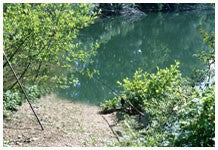
This was the result of just three nights of intensely heavy baiting with a Red Band/hempseed blend. Clearly the fish had been having a party on the bait carpet so the next step was to get another big dollop of bait in the swim and set up a single rod for when darkness fell.
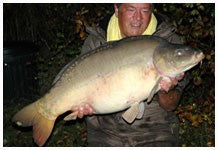
A couple of hours into darkness and I could tell there were loads of fish in the swim. They were swirling on the surface and you could see great oily swells boiling on the surface that betrayed the intenst feeding activity. I knew I was in with a chance and sure enough, I soon a run. This was the result, a forty!

There has been a lot of talk lately about the use of salt in baits and in my opinion much of the so-called ‘advice’ is at best ill-advised and at worse down right dangerous. If you wish to enhance attraction there are 101 better additives than salt, and they won’t put the fish at risk either. This is undoubtedly the finest additive you could possibly add to any wet groundbait, bucket of prepared hempseed, or in your SuperRed Method Mix. It is infinitely better than any salt, believe me.
Written by Ken Townley
